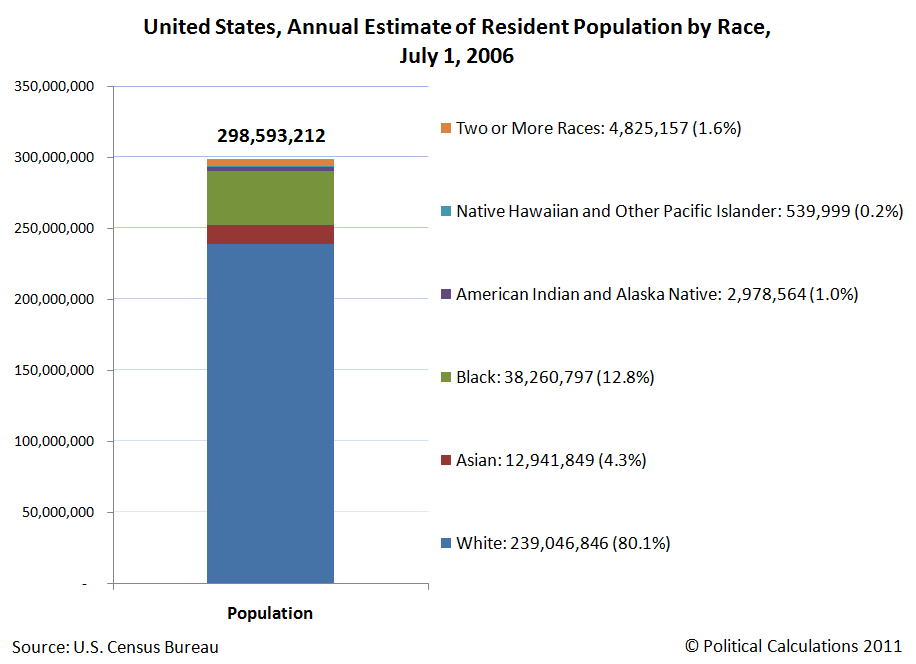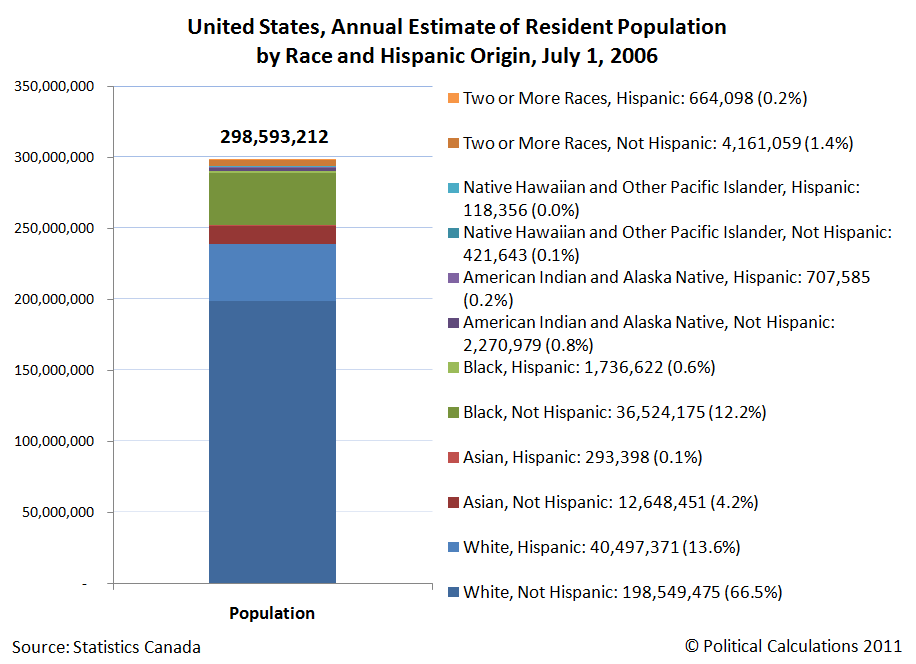How different are the U.S. and Canada with respect to each other where racial and ethnic diversity is concerned?
We thought we might try taking a stab at answering that question using data from 2006, the last year in which Canada conducted a national census of its population, which we'll compare with the U.S. Census' population estimates for that year.

Our first chart shows the racial and ethnic breakdown for Canada, which shows the numbers and relative sizes of what Canada calls its "visible minority" population. Here, unlike the approach taken by the U.S. Census in grouping people according to their race or ethnicity, Canada groups its minority population according to their ancestors' geographic origin.

As you can see in our next chart showing the U.S. population breakdown just by race, that makes it difficult to directly compare the Canadian population with the U.S. population, which looks much less diverse by comparison (because of fewer categories), even though minorities make up a much larger relative share of the total population than does the visible minority population in Canada.
To address that seemingly simple representation of the U.S. population, we next broke each of the U.S. racial population categories to factor in the portion of each racial group who claim some degree of Hispanic origin.

Once we break the data out this way, we find that segmenting the U.S. population like this shows that the U.S. population's diversity is at least on par with Canada's population, at least going by the number of categories.
However, except for very limited categories, we're still not able to directly compare the relative racial diversity of both nations, because so far, what we're really doing is an apples-to-oranges kind of comparison. Changing that to be a much better apples-to-apples kind of comparison will take some additional work....
Data Sources
Statistics Canada. 2006 Census. Visible Minority Population, by Province and Territory. Accessed 16 March 2011.
U.S. Census Bureau. Population Estimates. Annual Estimates of the Resident Population by Sex, Race, and Hispanic Origin for the United States: April 1, 2000 to July 1, 2009 (NC-EST2009-03). Accessed 16 March 2011.
Labels: data visualization, demographics
Welcome to the blogosphere's toolchest! Here, unlike other blogs dedicated to analyzing current events, we create easy-to-use, simple tools to do the math related to them so you can get in on the action too! If you would like to learn more about these tools, or if you would like to contribute ideas to develop for this blog, please e-mail us at:
ironman at politicalcalculations
Thanks in advance!
Closing values for previous trading day.
This site is primarily powered by:
CSS Validation
RSS Site Feed
JavaScript
The tools on this site are built using JavaScript. If you would like to learn more, one of the best free resources on the web is available at W3Schools.com.